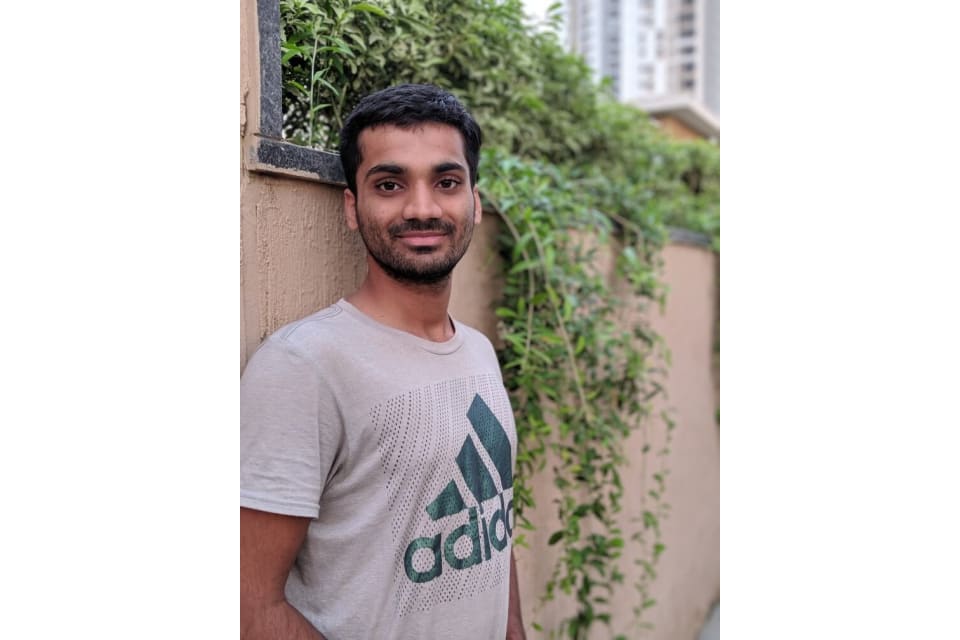Using Yoga to Treat My Back Pain

I started my Yoga journey in the year 2008 when I joined Omshantidhama Gurukula (Traditional school). There, I was introduced to yoga by Swami Ramdev. I started my practice with traditional hatha yoga, yoga philosophy, Pranayama, and cleansing techniques (Shatkarmas).
I then learned Vedic chanting in the Gurukula alongside my normal schooling. I started exploring the meanings of the mantras and learned Patanjali yoga sutras with Swami Brahmadev Ji.
When I started teaching yoga, I began through one on one sessions. This spiked my interest in yoga even more. Soon I devoured several yogic texts and joined the yoga instructor cours at Svyasa University, learning about yoga as a spirituality and a science. I also continued with my bachelor in yoga therapy (BSc). While working towards my BSc, I started exploring more aspects of therapy to treat my back pain.
Because of my own experience using yoga to treat my back pain, clients often come to me to treat theirs. In many cases, I’ve given patients relief after just 15 days of yoga practice. Along with yoga therapy, I also learned about the simple meditation technique developed by Dr. H R Nagendra, helpful in calming the mind.
During the time of vacation and Arogyadhama student training in university, I took special interest and took a variety of yoga classes. I also did several personality development camps for kids and taught them yoga and its benefits. After the BSc, I did Yoga Alliance 200 hours course in the Aayana yoga academy where I learned the Vinyasa and Hatha yoga teaching style. Currently, I am doing my Master's degree in Yoga (MSc.) and working with Ruh yoga as a lead Yoga teacher.
Online Yoga Classes – Live & Interactive
Get 2 free private yoga sessions and 2 weeks of unlimited group classes with authentic yoga teachers. No credit card required when you sign up today!
Share this post?
Interesting Articles
Guide To Tantra Yoga: A Pathway to Inner Peace and Connection
You’ve probably heard of it, but misconceptions about this style of yoga are so abundant that you may not know the true meaning behind Tantric, or Tan...
Continue ReadingHow to Modify Your Yoga Practice to Focus on Balance (Complete Guide)
Balance is a critical aspect of our daily life, and it becomes more important as we age. Maintaining good balance helps prevent falls, injuries, and o...
Continue ReadingYoga for Seniors: Poses and Practices for Balance and Fall Prevention
As we age, our bodies change and become more susceptible to falls and injuries. However, practicing yoga can help seniors improve their balance, flexi...
Continue ReadingRecent Articles
Neck and Shoulder Yoga for Pain Relief : New 1-on-1 Series!
Announcing A New 1-on-1 Series! We’re offering a new series of 1-on-1 classes! Our Neck and Shoulder Yoga for Pain Relief is designed to hel...
Continue ReadingOur New And Improved Group Class Platform!
Here's a quick walkthrough of our new GC interfaceExciting news! Our platform got an upgrade!MyYogaTeacher is always evolvi...
Continue ReadingNew 1-on-1 Hip Opening Series: Unlock Freedom in Movement
The new transformative 1-on-1 Hip Opening Series, specially designed to release tension and boost strength and mobility in your hips, is the perfect w...
Continue Reading© Copyright 2020 MyYogaTeacher Inc

